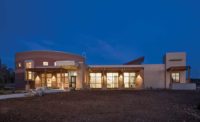
The University of Mississippi Medical Center halted construction on three building projects after ground-penetrating radar surveys showed about 2,000 unmarked graves on the sites.
Jackson-based UMMC has long been known to house graves because it had been the site of the former Mississippi State Insane Asylum and a potter’s field, according to spokesman Jack Mazurak. It’s also possible that an African-American church and a Civil War burial area were also on the land.
The projects now on hold include a six-story parking garage for 1,050 vehicles, now relocated to the west of the originally planned site, and the American Cancer Society of Mississippi Hope Lodge, pending a new site. The third site is the Mississippi Children’s Justice Center; the smaller building that may continue construction according to original plans, “but we need to do more analysis on that possibility,” Mazurak says.
None of the projects have gone out for bid, he says.
The decision to do a radar survey of the building sites' land is the result of the discovery of 66 unidentified graves in early 2013.
At that time, construction crews were preparing to widen and strengthen the roadbed of University Drive, an east-west connector.
UMMC officials called in Mississippi State University's Cobb Institute of Archaeology, Starkville, to exhume and analyze the graves, a process that is still under way.
When the studies are complete, the remains will be reburied in an existing cemetery, located on UMMC's campus, that is used for anatomical donors and for other graves found on campus.
“Throughout the decades, contractors came across graves during construction projects,” Mazurak says. “We also knew there were likely a higher concentration of graves” on the two planned building sites, which are north and south of University Drive.
This time, the preconstruction radar survey showed an estimated 800 to 1,000 graves on land to the south of University Drive, on the site where the parking garage would be.



Post a comment to this article
Report Abusive Comment